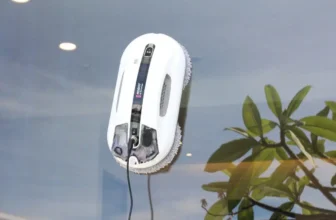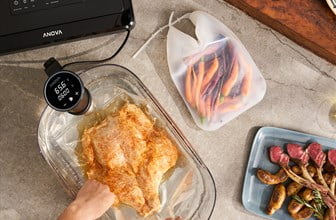Table of Contents
- 1 Top 3 Recommended Best Air Purifiers
- 2 Why Choose the Best Air Purifier?
- 3 How to Choose the Best Air Purifier
- 4 Conclusion
- 5 Recommended Air Purifiers
How do you choose the best air purifier in 2024? What functions and features should the ideal air purifier have to suit your needs? Read our guide and make an informed choice.
 Air purifiers have become a staple in many households around the UK. As more Brits spend time indoors due to changing work patterns and evolving lifestyles, the quality of air in our homes has become a subject of concern.
Air purifiers have become a staple in many households around the UK. As more Brits spend time indoors due to changing work patterns and evolving lifestyles, the quality of air in our homes has become a subject of concern.
Indeed, an efficient air purifier can make a remarkable difference to the quality of your indoor air, providing relief from allergens, reducing odours, and mitigating harmful particles.
But how do you navigate the market and find the best air purifier for your home?
This guide has got you covered.
Top 3 Recommended Best Air Purifiers
Why Choose the Best Air Purifier?
Before diving into the selection process, it’s essential to understand why you need an air purifier in the first place.
Air purifiers work by filtering and cleaning the air, reducing the concentration of harmful particles, including dust, pollen, pet dander, and smoke. They can be particularly beneficial for those with allergies or asthma, for households with pets, or where people smoke.
Air purifiers also help eliminate household odours and volatile organic compounds (VOCs), which are gaseous substances emitted by certain solids and liquids in your home.
These could come from products like paints, aerosol sprays, cleaners, disinfectants, and even air fresheners.
How to Choose the Best Air Purifier
The best home air purifiers efficiently remove harmful particles and work silently. The main criteria for evaluating the best air purifier are filtration efficiency, coverage area, noise level, safety of use, energy consumption, additional functions and manufacturer’s warranty.
Below we will detail the important aspects to help you choose the right air purifier for you.
Size of the Air Purifier
When we discuss the size of an air purifier, it’s not merely the physical dimensions of the unit.
 Rather, the size also relates to the unit’s capacity to clean the air in a certain room size, usually measured in square feet or metres. This is typically referred to as the purifier’s coverage area.
Rather, the size also relates to the unit’s capacity to clean the air in a certain room size, usually measured in square feet or metres. This is typically referred to as the purifier’s coverage area.
Most manufacturers will specify the ideal room size for their air purifier models. This measurement can range from small, personal units suitable for a bedroom or home office to larger models designed for open-plan living areas or entire apartments.
How do you determine what room size you need? You simply measure the length and width of your room in feet (or metres), then multiply these figures together to calculate the room’s area. For instance, if your room measures 15 feet by 20 feet, your room is 300 square feet.
It’s always better to opt for an air purifier that covers a slightly larger area than your actual room size. If your purifier is rated for a smaller area than your room, it will still clean the air but will take longer to do so and may not be as effective in removing pollutants.
Understanding the CADR Rating
The Clean Air Delivery Rate, or CADR, is a standard rating that gauges the total volume of air that an air purifier can clean of a specific pollutant (dust, smoke, and pollen being the common ones) in one minute. The CADR is measured in cubic feet per minute (cfm). A higher CADR indicates that the air purifier can clean a larger volume of air more quickly.
For example, if an air purifier has a smoke CADR of 300 cfm, it means it can reduce smoke particle levels to the same concentration as would be achieved by adding 300 cubic feet of clean air each minute.
The Association of Home Appliance Manufacturers (AHAM) provides CADR certification for air purifiers in the US. While it’s a US-based certification, it’s recognised internationally and often used by UK consumers to compare air purifier performance.
You’ll often see three CADR ratings, each corresponding to the effectiveness of the purifier against smoke, dust, and pollen. When comparing CADR ratings, ensure you’re comparing like with like. For instance, don’t compare the dust CADR rating of one model with the pollen CADR of another.
As a rule of thumb, for effective air cleaning, choose a unit with a tobacco smoke CADR of at least 2/3 your room’s area. For example, if your room is 300 square feet, choose a model with a smoke CADR of at least 200.
Type of Filters
When you consider buying an air purifier, the type of filter used is a vital consideration. Different filters serve different purposes and have varying capabilities when it comes to cleaning indoor air. Some filters are designed to trap particles, while others work best against gases and odours. Let’s delve deeper into the most common types of filters you’ll encounter when choosing an air purifier.
1. HEPA Filters
High Efficiency Particulate Air (HEPA) filters are the most well-known and widely used air purifier filters. The term HEPA is a standard defined and set by the U.S. Department of Energy. A true HEPA filter is capable of trapping 99.97% of all airborne particles larger than 0.3 microns. This includes common allergens such as dust, pollen, mould spores, pet dander, and some bacteria and viruses.
One thing to note is the distinction between ‘True HEPA’ and ‘HEPA-Type’ filters. True HEPA filters meet the strict standards mentioned above, while HEPA-Type filters do not. HEPA-Type filters are often used in more affordable air purifiers and have a lower efficiency rating, capturing around 99% of particles that are 2 microns or larger.
2. Activated Carbon Filters
Activated carbon filters are specifically designed to tackle problems that HEPA filters can’t – gases, chemical emissions, odours, and volatile organic compounds (VOCs).
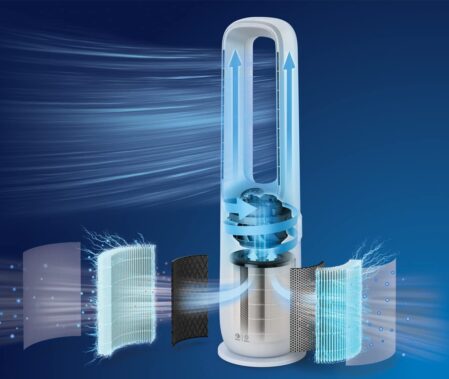 These filters are made of small pieces of carbon that are porous and highly absorbent.
These filters are made of small pieces of carbon that are porous and highly absorbent.
Activated carbon has a large surface area that effectively ‘adsorbs’ (not absorbs) certain particles. During adsorption, particles stick to the outside of the activated carbon particle, thereby removing them from the air that passes through the filter. This is ideal for removing odours from cooking, smoke, pets, and certain chemicals.
3. UV-C Light Filters
Ultraviolet (UV) light filters use short-wave ultraviolet light (UV-C light) to inactivate airborne pathogens such as bacteria and viruses. This effectively sterilises the air, making it safer to breathe.
UV-C filters are not designed to remove particulate matter from the air, and they are often used in combination with other filter types, like HEPA filters, in an air purifier. It’s worth mentioning that UV-C filters need to have safety mechanisms in place to prevent direct exposure to the UV light, which can be harmful.
4. Pre-Filters
Many air purifiers come equipped with a pre-filter. This preliminary filter helps capture larger airborne particles, such as dust and hair, and can extend the life of the primary filter inside the purifier. Pre-filters are often washable or vacuumable, which can save on maintenance costs.
5. Ionising Filters
Ionising filters, or ionisers, work by releasing negative ions into the air. These negative ions attach to positively charged particles in the room, such as dust, dander, and bacteria. This process causes the particles to become heavy and fall to the floor or get drawn into a collection plate if the purifier has one.
While ionising filters can help clean the air, they have come under scrutiny for producing ozone, a lung irritant, as a byproduct. It’s best to choose models that are certified to emit low levels of ozone.
In conclusion, understanding the different types of filters available in air purifiers will help you make an informed choice based on your specific needs, whether that’s dealing with allergies, neutralising odours, or enhancing overall air quality. Often, the best approach is a combination of filter types to cover a wide range of air pollutants.
Noise Level
Noise level is an important consideration for any household appliance, but it becomes even more critical with air purifiers. Given that these devices often run continuously, a noisy air purifier can become a significant source of disturbance, especially in quiet spaces like bedrooms, studies, or nurseries.
Noise output is usually measured in decibels (dB). To give you a sense of scale:
- Whispering measures about 30 dB
- Normal conversation is around 60 dB
- Vacuum cleaners are around 70 dB
Lower decibel levels generally indicate quieter operation. Many air purifiers provide noise level information for different fan speeds. Naturally, the higher the speed, the louder the purifier tends to be.
Many premium air purifiers have a ‘sleep mode’ or ‘night mode,’ where the fan speed is reduced for quieter operation. If you’re sensitive to noise or planning to use the purifier in a bedroom, opt for models with lower dB ratings or those with a specific quiet mode.
Energy Efficiency
Air purifiers are appliances that often run 24/7, so considering energy efficiency is a must.
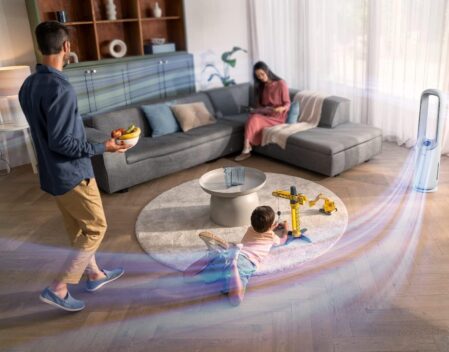 The energy consumption of an air purifier depends on several factors, including the power of its motor, the fan speed at which it operates, and the amount of time it runs.
The energy consumption of an air purifier depends on several factors, including the power of its motor, the fan speed at which it operates, and the amount of time it runs.
The power usage of most air purifiers ranges from 30 to 250 watts. At the lower end, an air purifier uses less energy than a light bulb, while at the upper end, it might consume energy similar to a computer.
To ensure energy efficiency, look for models with the Energy Star certification. The Energy Star label is a guarantee that the appliance is 40% more efficient than standard models in the same category. This can lead to substantial savings on your energy bill over time and reduces the environmental impact.
In addition, many air purifiers come with energy-saving features such as:
- Auto Mode: This feature allows the air purifier to adjust its fan speed based on the air quality, reducing power consumption when air purification isn’t as necessary.
- Timer: With a timer, you can set your air purifier to run for a specific number of hours, which prevents it from running when it isn’t needed.
- Sleep Mode: This mode, as mentioned earlier, not only reduces noise but also lowers power consumption.
Extra Features
The functionality of an air purifier goes beyond just purifying air. Many models come equipped with additional features that enhance usability, convenience, and the overall user experience. Here are some common extra features you might find:
- Air Quality Sensors: These sensors detect and display the current air quality in real-time. Some models even adjust the fan speed automatically based on the air quality readings.
- Filter Change Indicators: This helpful feature notifies you when it’s time to replace the filter, ensuring your purifier always operates at its best.
- Programmable Timer: A timer allows you to program the purifier to switch on or off at certain times. This is especially useful if you want to run the purifier for a few hours before you get home or shut it off when you leave.
- Wi-Fi Connectivity: Some purifiers can be connected to your home Wi-Fi network, allowing you to control them remotely using a smartphone app. You can adjust settings, turn the purifier on or off, and even monitor your home’s air quality from afar.
- Remote Control: A remote control adds convenience, allowing you to adjust settings without needing to get up and touch the unit.
- Nightlight: Some models, especially those designed for bedrooms or children’s rooms, feature a nightlight. This can often be dimmed or turned off as per your preference.
These extra features can provide a better user experience, but they might also add to the cost. Determine which features are essential to you and which ones you can do without.
Cost and Availability of Replacement Filters
One aspect often overlooked when purchasing an air purifier is the cost and availability of replacement filters.
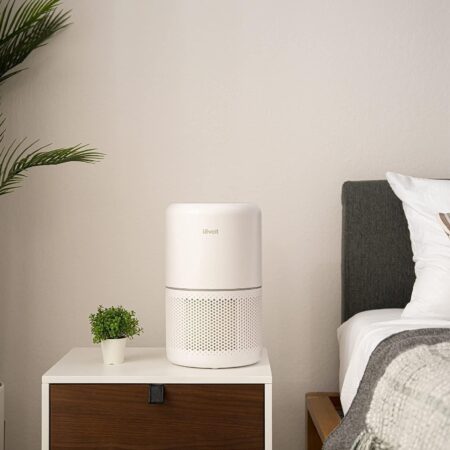 The filters in your air purifier need to be replaced regularly to maintain optimal performance. Ignoring this maintenance can lead to decreased air cleaning efficacy and potential damage to the unit.
The filters in your air purifier need to be replaced regularly to maintain optimal performance. Ignoring this maintenance can lead to decreased air cleaning efficacy and potential damage to the unit.
The frequency of replacement depends on the type of filter and the air quality in your home, but generally, HEPA filters need to be replaced every 12-24 months, while activated carbon filters last around 6 months. Pre-filters, if washable, can be cleaned and reused multiple times.
When selecting a purifier, make sure to check the average lifespan of its filters, the cost of replacements, and how easy it is to find them. Some models use proprietary filters that can only be purchased from the manufacturer or specific suppliers, while others use more standard sizes available from various outlets.
Keep in mind that while some air purifiers might be cheaper upfront, they might end up costing more in the long run if their filters are expensive. It’s wise to calculate the annual cost of filter replacement to get a more accurate picture of the ongoing costs.
Top Air Purifier Brands
There are several reputable air purifier brands on the market. Brands such as Dyson, Philips, Levoit, and Blueair offer a range of models to suit different needs and budgets.
- Dyson: Known for their innovative designs, Dyson offers air purifiers that double as fans or heaters and are often equipped with smart features like real-time air quality reports.
- Philips: Philips air purifiers are known for their high-quality HEPA and carbon filters, which effectively remove allergens, odours, and gases from the air.
- Levoit: Levoit offers affordable options without skimping on key features, such as HEPA filters and quiet operation.
- Blueair: This Swedish brand offers high-performing and energy-efficient purifiers with minimalist design aesthetics.
Conclusion
Choosing the best air purifier for your home can significantly improve the quality of your indoor air, making your living space more comfortable and healthier. By considering factors like the size of the unit, type of filters, CADR rating, noise level, energy efficiency, and cost and availability of replacement filters, you can find a model that suits your specific needs and budget.
Remember, an air purifier is just one aspect of maintaining healthy indoor air. Regular cleaning, proper ventilation, and reducing sources of pollution — like smoking indoors or using chemical-laden cleaning products — also play a critical role in keeping your indoor air clean and fresh.
Whether you’re a pet owner, a city dweller dealing with traffic pollution, an allergy sufferer, or you simply want to breathe cleaner air, investing in an air purifier can make a significant improvement to your indoor living environment and your health.
Recommended Air Purifiers
Taking into account the above criteria, analysing the existing offer and buyers’ opinions, we present some recommendations for air purifiers that offer an exceptional quality / price ratio.
- 【Worry-free】Solve most of the air quality problems in your life, such as pollen, dust, smoke smell, pet dander, etc. Easy to move at a weight of only 2.2 lbs
- 【Personal HEPA Purifier】Core Mini adopts 360° VortexAir 3.0 technology and a 3-stage filtration, which can purify 17㎡ in 30 minutes
- 【Easy to Use】Just two buttons will help you cycle through gears 1 to 3 quickly, check the reset filter indicator. The screen indicator will automatically turn off one minute after your operation
- LARGE COVERAGE UP TO 49 m²: with CADR 190 m³/h, it can purify 20 m2 in less than 16 min (1)
- 3-LAYER HEPA FILTRATION: Captures 99.5% of particles up to 0.003 microns (2) – to protect from pollen, dust, dust mites, pet dander or smog
- CERTIFIED ALLERGY-FRIENDLY by ECARF, the purifier removes 99.99% of pollen, dust mite or pet allergens (5)
- 【Smart Control & Access Anywhere】 -- With the VeSync App you can change fan speed and mode, check filter life, set schedules, set timers anywhere. All from your smartphone
- 【Voice Control】 -- The Core 200S is compatible with Amazon Alexa and Google Assistant, so you can use your air purifier without having to lift a finger
- 【Effective Purification】 -- With 360 ° Design and Vortexair Technology, Core 200S purifies your air Once per hour in-room up to 70㎡ and 2 times per hour in-room up to 35 m², delivers fresh air 360º around you. Suitable for bedroom, living room, smoking room and kitchen
- PACKAGE INCLUDED: One HEPA Filter come with a micro usb cable, wall charger not included.Filters need to replace every 6 months, no washing search "B07KYFCB6S" to buy the replacement filter.
- HEPA AIR PURIFIER FOR HOME: Filters 99.97% of dust, pollen, cigarette smoke, odors, mold spores, and pet dander. Filters particles as small as 0.3 microns and larger, and filters air pollution of PM 2.5 (pollution rate) to help improve overall health. Perfect for pet owners, babies, children, elderly, or for anyone wanting to improve air quality.
- PORTABLE AND COMPACT: Size: 12.5*12.5*20CM, Weight: 550 grams. It can cover area of about 10 square meter. Perfect solution for small areas and rooms such as studio, bedroom, office desktop, kitchen, pet room.
- 【High-Efficiency Filter】With 3-layer filter structure, pre-filter, high-Efficiency Filter, activated Carbon, this air purifier for home bedroom guards the health of you and your family. Filtration technology can effectively filter most of particles, give you fresher air.
- 【Optionanl Mode Speed & Strong Purification】If you want to change air quickly or use this air purifier for bedroom in a new house, long-time idle room, you can choose Strong Speed Mode; for daily use, you can set the Normal Speed Mode.
- 【Low Energy Consumption】This air purifier for home bedroom is rated at 22 watts, which is energy efficient. Besides, this air purifier has a timer function where you can set a time and the machine will automatically turn off. You don't need to worry about power consumption or electricity bills either.
- 【2 Functions in 1】Not only an air purifier but also an aroma diffuser. When you want to use the aromatherapy function, add 2-3 drops of your favourite essential oils (Not Included) to the aroma pad under the cover. Then the air cleaner will diffuse the clean air and fresh fragrances into the room
- 【Dual Filter Design】The LV-H128 HEPA Air Purifier contains dual filters. Both filters consist of pre-filter, HEPA filter and activated carbon filter. Help to bring you more fresh air than traditional ones
- 【Effectively Purify the Air】 HEPA filter can effectively clean airborne particles 0.3 microns in size, like smoke, odours, pollen and dust mites etc to help relieve asthma, allergy symptoms
- 【4 CUSTOMIZED REPLACEMENT FILTERS】Depending on different individuals' needs, we provide four types of filters for purchase: original filter, pet allergy filter, toxin absorber filter, mould & bacteria filter for choose. Note: One original filter is pre-installed in the machine
- 【Vortexair PURIFY TECHNOLOGY】 CADR rating 187m³/h allows it to cover up to 80 m² based on 1 air change per hour, Using the Core 300 to fill your environment with clean air. Notes: AC 220-240V/50HZ with UK 3-Pin Plug. It's NOT a wireless product and CAN'T be connected via USB
- 【FILTER AIRBORNE PARTICLES】Working with ultra-fine Prefilter and activated carbon filter, Our HEPA filter traps allergens like dust, pollen, mould spores, pet hair, and reduces unwanted odors from pets, smoke, cooking fumes
- LONG-LASTING FILTER: No need to replace your filter for up to 5 years (Tested to GB/T18801-2015 P.CCM, based on 50% CADR decline, 12 sq m cleaning area, and 12 hrs daily operation on MAX fan speed.)
- Shark NeverChange5 Air Purifier for Home, Bedroom, Room Coverage 60sqm, 5-Year HEPA Filter Traps 99.97% of Allergens including Dust, Pollen, Pet Dander, Auto Mode, Quiet, LED Display, White HP150UK
- MONITORS AIR QUALITY: Clean Sense IQ monitors air quality and automatically reacts to changes in the environment, adjusting the cleaning power throughout the day. See the air quality improve with real-time results on an LED display.
Last update on 2024-05-17 / Affiliate links / Images from Amazon Product Advertising API



